The All-Clad Cordless Immersion Blender Is a Lifesaver for Small Kitchens
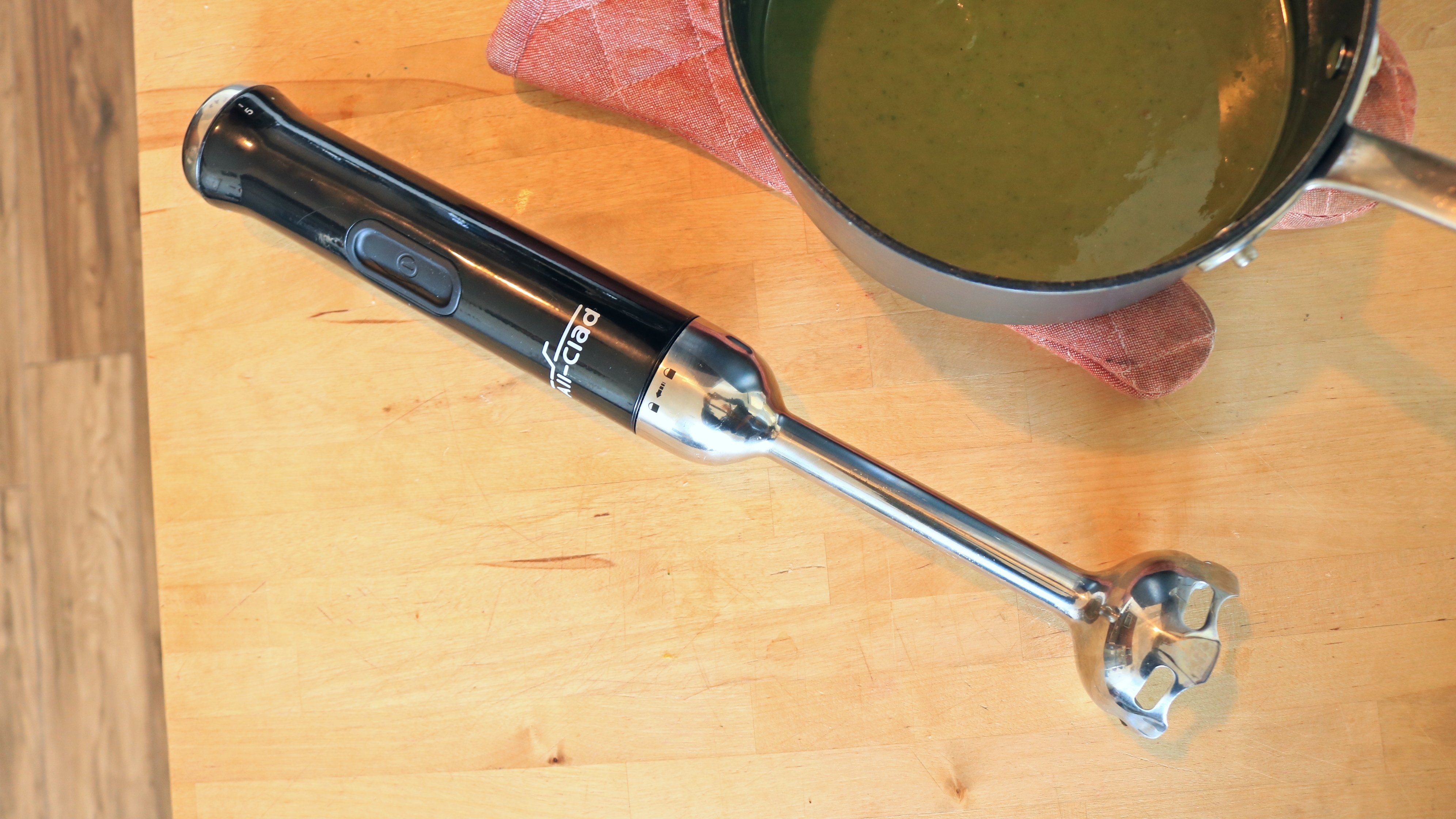
All-Clad Stainless Cordless Rechargeable Hand Blender
-
The Good
- Cordless blending
- Powerful appliance
- Five speed settings
- Small and easy to store
The Bad- Expensive
- Keeping it charged requires some planning
Table of Contents
While I like the power of a full-on regular blender (like this snazzy Vitamix), they take up a lot of space, they can be an ordeal to clean, and many models are completely unaffordable. These are all reasons that, prior to testing blenders very recently, I happily lived without one for years. For my purposes, regular blenders seemed to be completely unnecessary because I had my All-Clad cordless immersion blender—a powerful, hand-held blending appliance that barely takes up any of your kitchen space.
What is an immersion blender?
Immersion blenders are fantastic appliances across the board. They’re typically two-piece sets with a handle that houses the engine and usually includes the on-off switch. The business end is a long stainless steel rod that flares out, and it's here where the blades live. Immersion blenders can also be called stick blenders, an accurate name for their shape.
Functionally, it’s like using a regular blender but in reverse—instead of putting food in a blender, you put the blender in the food. When you attach the blender rod to the handle, you can then plunge the stick-end down into any container and blend whatever is inside.
What sets the All-Clad immersion blender apart
Before I got the All-Clad, I had a Cuisinart immersion blender. It worked fine—it was about $60 and had two speed settings. I blended everything with that thing—smoothies, sauces, dips, soups. The only thing that would trip me up was the lengthy cord. Lots of things have cords, so it may not seem like a big deal on paper, but whether it’s because my kitchen is tiny and packed or because I would often be cooking multiple things at once, the long cord would often knock things over as I tried to navigate my crowded counter. Or worse, the cord would loop down into a simmer pot sitting behind the other pot of food I was trying to blend.
It would happen so often that it wasn’t merely a pesky nuisance, it was absolutely infuriating. Once my Cuisinart passed away, I decided I needed to go wireless.
What I blend with my All-Clad wireless immersion blender
I can’t stress enough how helpful it is to blend food directly in the container that is already holding it. You have 12 quarts of cream of celery soup to blend? No need to batch it into the regular blender and make an irritating mess, just plunge the immersion blender directly into the pot of soup. You’ve got your in-laws over for Thanksgiving dinner and your gravy is lumpy? Don’t stress, just smooth it out real quick before you pour it into the gravy bottle. (Yes, the gravy bottle.)
Where the All-Clad excels
I most often break out this blender when I’m making soup or smoothies. The blender is extremely low-profile, and is much more powerful than the old Cuisinart I was working with for years. When separated, both parts are about 9.25 inches long and 2 inches wide, which is easy to store. I disconnect the stick from the handle and just pop them into a shallow utensils drawer. I’ll go about my business, cooking soup or loading a bunch of fruits and veggies into a blending cup. When the meal is ready for that finishing touch—blending it into a smooth and velvety liquid—I simply open the drawer, twist on the blender stick, and plunk in the cordless immersion blender.
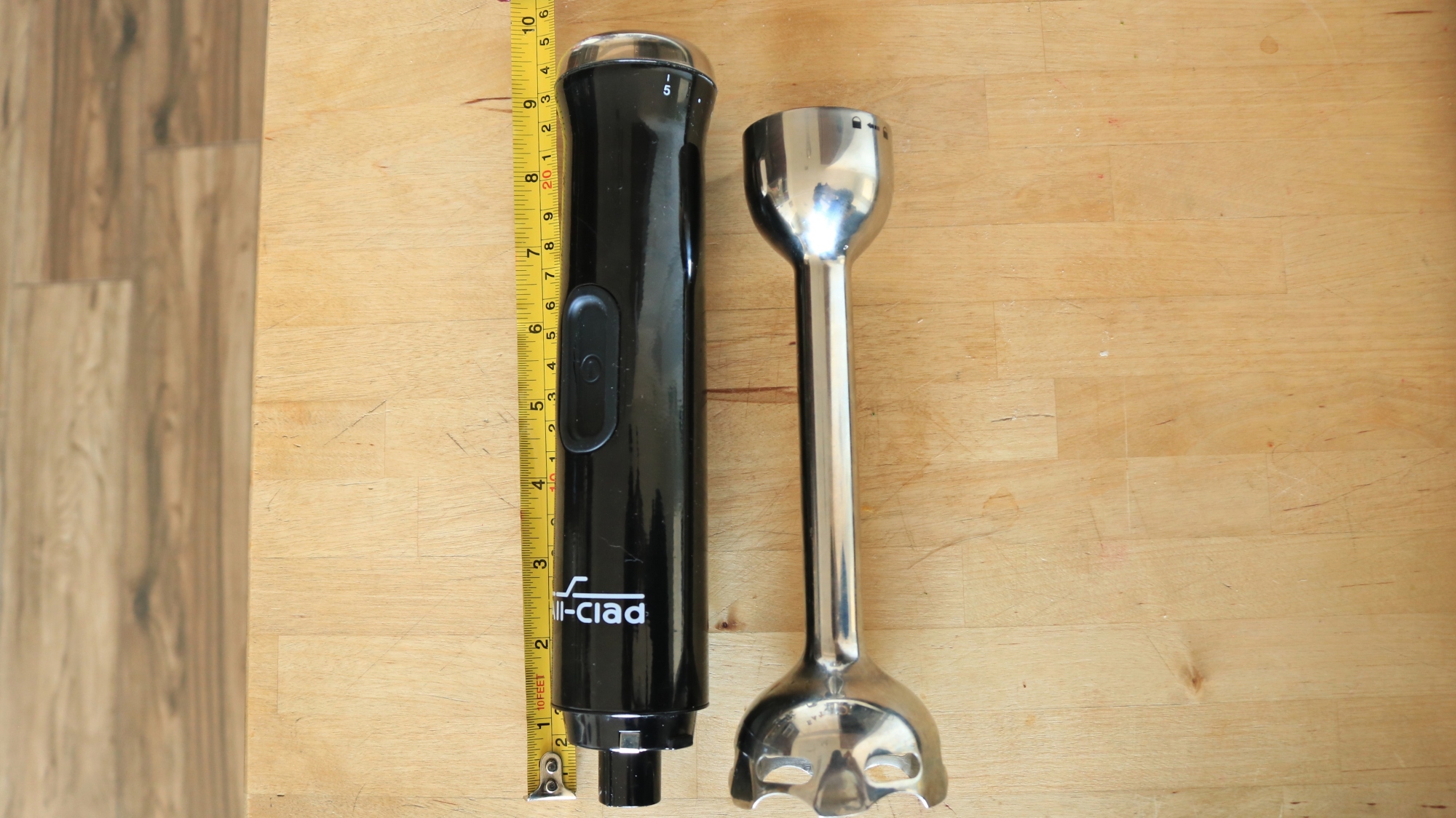
It has five speeds (which is a much wider range than the average one or two speed), it’s easy to operate, and surprisingly resilient. No one should ever test this, but one day I detached the handle side from the blade end and sat it on the counter. The handle side rolled off and crashed onto the floor. It was a pretty terrible racket and I thought I had ruined the blender. Surprisingly, it got right back to work.
After a few uses, or about nine minutes of constant running (but I don’t think I’ve ever needed to run it for more than a minute), you’ll notice the immersion blender only blends for short stints before a red light blinks at the top. This means it needs to recharge. Plug in the recharging base and sit the blender (only the top piece) into the port. It takes about an hour to charge completely.
Where it falls short
For powerful blending and untethered movement, this cordless blender is extremely helpful. However, a heavy retail price tag is what keeps it from being a must-buy. At full retail, this immersion blender is $300, but luckily, you can get a perfectly good unit from the VIP All-Clad factory seconds website for $129.95.
The factory seconds website is an authorized outlet that only sells true All-Clad products that for cosmetic reasons can't be sold at retail price—so that might look like box damage or cosmetic scratches that don't impact the performance of the item. It's the appliance version of buying a perfectly good eggplant that was discounted because of a weird stem. That’s where I bought mine, and frankly, I didn’t even see any of this alleged “box damage.”
How to operate the All-Clad immersion blender
1. Activate
Operation is simple. With a few pulses, you’ll be able to take down frozen fruits or a pot full of boiled vegetables. Just make sure the handle is charged before you start prepping. Twist the stick end onto the handle until it clicks. Press the top button to enable the appliance. It should blink blue to signal the appliance is live and charged.
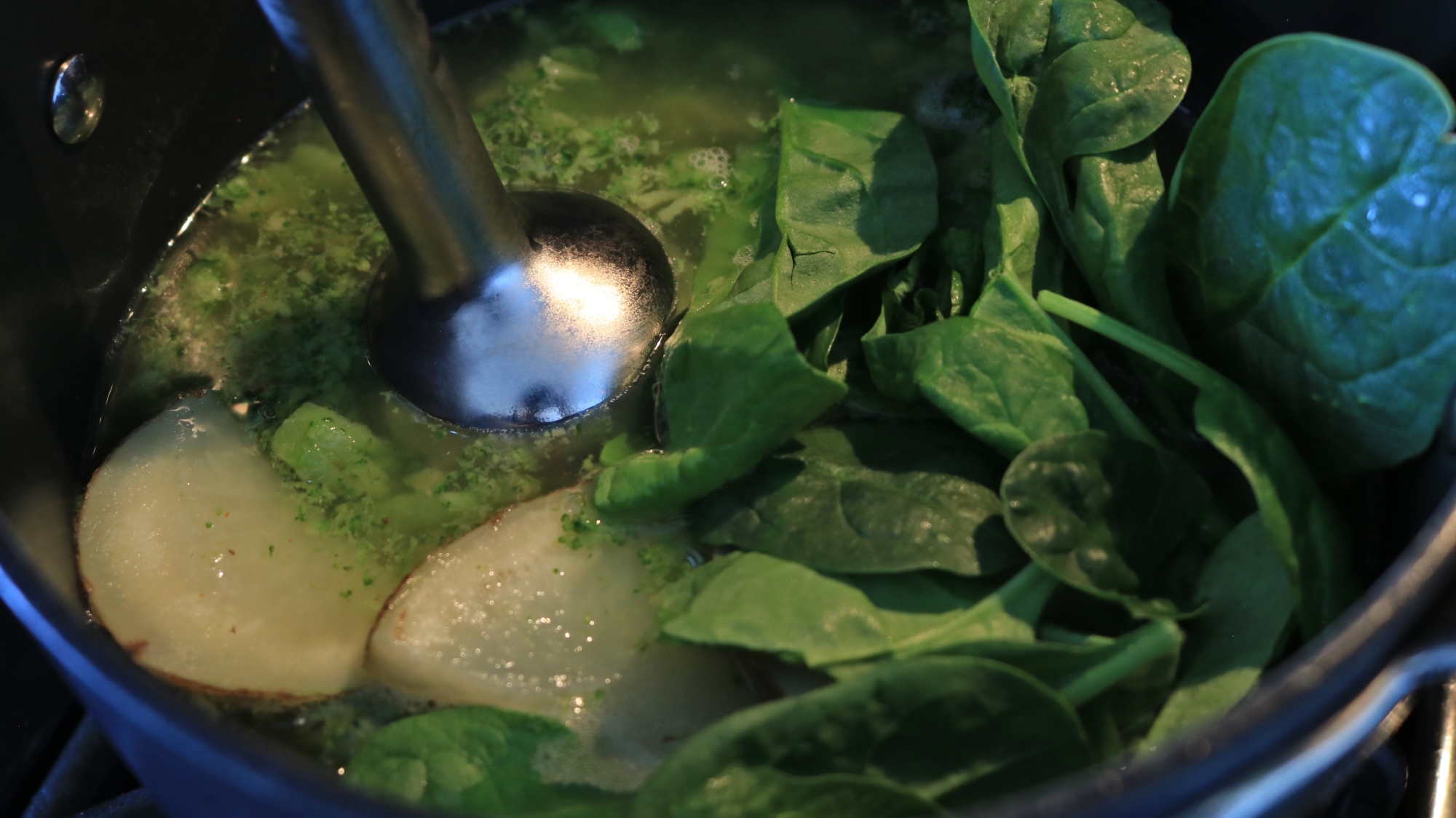
2. Choose your speed and blend
Rotate the dial on the same end to pick your speed. Make sure the flared blade end is completely submerged into the meal you’re blending and press the On button on the side of the handle to blend. I like to target lumps to speed up the blending process rather than wait for the lumps to get sucked up into the blades. That's one of the things that makes an immersion blender so great—you can more easily target areas that the blades aren't getting on their own by repositioning the appliance as you go.
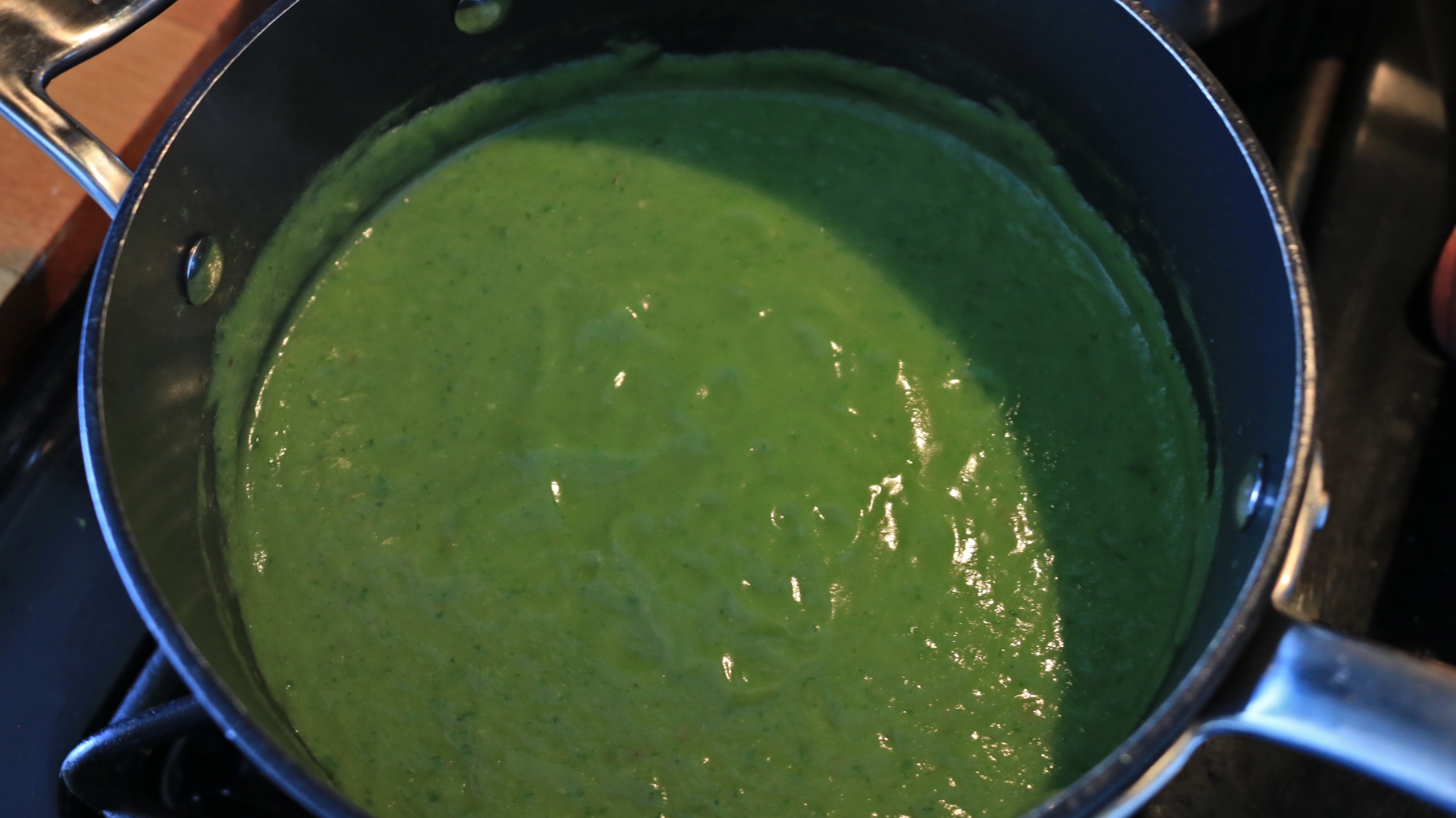
3. Deactivate, clean, and store
Once you’re satisfied with the texture, click the top button again to deactivate the unit. Then you can twist it apart and chuck the stick into the sink.
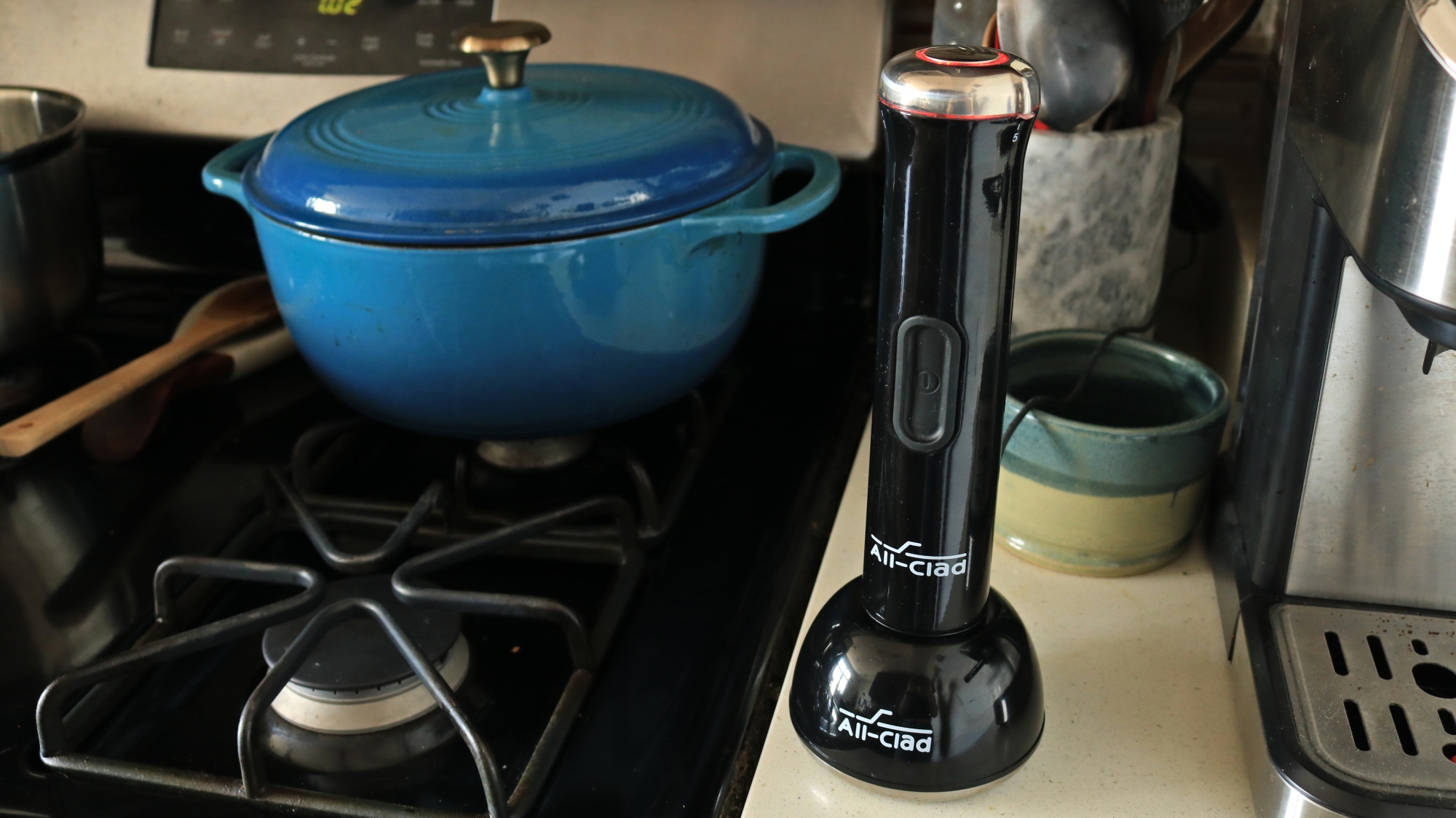
The handle can pop back onto the charger if you want to keep it at 100%, but you don’t have to. I’ve left mine in the drawer for weeks, only partially charged, and when I needed it again it was ready to roll.
Is this the right tool for you?
Not everyone works in a cluttered kitchen like I do, but if you’ve been looking to ditch the cord, this is a great immersion blender to grab up. And of course, the deal is sweetened by the discounted price. This is also a great choice if you’ve been looking for an immersion blender with more speeds so you can have a bit more control over what you’re blending.
However, if you’re on a tighter budget, only blend foods once in a while, or having a plug-in immersion blender has never bothered you, then you should pass on this appliance. Even at the discounted price, it’s not cheap, and you might prefer to opt for a different brand to save money.


